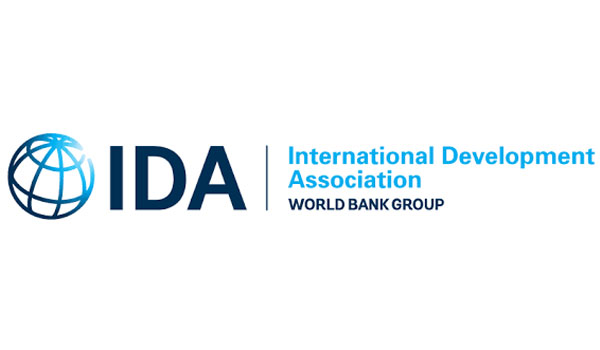
It is no secret that banks face a multi-dimensional juggle of global technology and business and consumer demands that have local trends and needs. Bankers must be aware of the latest worldwide digital technologies and create strategies that use them to address customer-banking needs. Banks also operate in countries where people still use older technologies such as SMS-based phones. This means bankers must be aware of technologies, innovations and capabilities that can be deployed to older devices and channels. In a discussion with CR2, Stessa identifies:
Global trends and local trends and requirements that financial institutions have to juggle along with the need to identify new niche markets.
Use of new criteria to uncover new niche markets are essential to the bank’s ability to innovate and increase profitability.
Capabilities banks must have in an agile digital banking platform to support all of these demands.
Banks must also juggle their local customers’ preferences – whether for a payment method or for channel or devices. In the past, they used traditional demographic ategories such as age, gender, household income and education to support these preferences and capabilities. These segmentations no longer work. Customer preferences and requirements have expanded. To meet these needs of their local customers, banks must use appropriate technology. Some of the trends and local customer requirements include the following:
To address all customers’ needs, therefore, banks must juggle a broad spectrum of new and older technologies and global and local customer preferences. This means that while the bank must support customers who still use feature phones, the bank must also support other customers who would use WhatsApp to open a new account.
This juggle is not new to banks. Banks have done the best they can to keep all the balls in the air. Constant change in both global and local business environments demands that banks manage this juggle with a focus on new ways to attract and service more customers.
In addition, the increasing demands of this juggle means that banks cannot afford to make traditional assumptions about consumer needs and digital banking technology. They cannot assume that technologies and products that are successful in one country will be successful in another. Banks cannot rely on the legacy methods, data and banking systems to identify new customer markets and to create and deliver the products and services these new markets require.
On top of the technologies that bankers have to juggle, bankers find differentiation is more difficult than ever. All banks, fintechs and challenger banks offer the basic set of banking and payment services. Traditional customer data as the basis for new products and services is no longer enough to differentiate banks in an environment where competitors and disruptors emerge weekly.
Banks have to reach new customer markets. But how will they find these markets? If banks aren’t going to rely on traditional customer segmentation, which customers should they target?
A bank’s value to its customers, then, is to use digital banking technologies to juggle global and local trends and preferences to create and deliver products that target new niche groups of customers. These customers won’t fit neatly into traditional demographic categories. Their needs go undetected and unmet.
Niche markets push the bank to innovate – to go beyond supporting basic and necessary banking transactions– on the same digital banking platform. By understanding customers in new ways, banks can leverage the appropriate global and local technology trends to attract new customers and increase profitability.
To identify niche groups, banks must be able to look beyond the borders of traditional customer segments. They must identify shared needs that are not apparent through traditional customer data and analytics. These shared needs cross those segments.
There is no template of what a niche market should or will look like or where a bank can find them. Nielsen provides an example of how banks can uncover niche markets. Nielsen has identified niche markets within the youth market for retailers in Africa. Based on their analysis of the way people consumed media, Nielsen classified 15 African countries into 3 new groups of consumers “Simple, Savvy and Selective.”
These groups were defined by “the frequency of usage, the range of programming/mobile services accessed and the digital and social media activities they engage in.” For example, young people in a Nielsen defined “Savvy” country are “more likely to access the internet, interact with social media and use advanced mobile services beyond basic calling and SMS activities.
They have the highest awareness of various instant messaging tools and social media, and of those they engage with, the frequency is daily.” In “Selective” countries, consumption ranges “from less involved media usage to becoming more engaged. Mobile voice and data costs are also, on average, at a premium versus the Savvy countries.” The cost of mobile data affects consumer behaviour in these countries
The characteristics of these two groups point banks towards different digital banking strategies and technologies to uncover and reach different niche groups of young consumers. Banks must think differently to use new factors and analysis to uncover and expose new customer groups.
But data is not enough. Banks who successfully reach these customers must have a digital banking platform that can accommodate all the technologies and strategies that a bank requires to operate in “Savvy,” “Simple” and “Selective” countries.
To uncover new markets, then, banks must seek digital banking platforms designed to both support traditional markets and use data in new ways. This digital banking platform must also be able to create the products and services to meet these market needs. Many banks view the process of acquiring digital new banking technology as a choice between build or buy. In the past, this was an important decision that impacted the bank’s ability to differentiate itself.
The availability of non-banking specific digital tools, platforms and data analytics solutions, as well as third party banking APIs makes it tempting for IT groups in banks to consider developing a digital banking platform in-house. Banks should resist this temptation. The current business environment, demands that banks bring new products and services and capabilities to market even faster. To increase profitability, they must be able to quickly identify and target new customer groups faster than ever. If not, competitors, challenger banks and fintechs will quickly step into the bank’s targeted niche markets.
o do this, banks need not only a digital banking platform, such as CR2’s BankWorld, that is ready for customisation, integration and identification of new markets, but also a vendor partner that can provide the development and banking expertise that the bank may not have. This includes the technology development and integration expertise for deploying the platform as well as an innovation practice that continuously brings new technologies and capabilities into the digital banking platform. This type of partnership with a digital banking vendor like CR2 enables the bank to focus on the customers and products that will differentiate it from all its various competitors and on customising the platform to accomplishing that differentiation.
A digital banking solution that reduces transaction friction, improves customer experiences and focuses on channel integration isn’t enough to help banks manage the multidimensional juggle, identify niche markets and continuously bring new products to these markets.
These digital banking platforms, like CR2’s BankWorld, must also demonstrate that their ability to service high volumes of customers that include the broad spectrum of unbanked and well banked customers. These customers have both standard transactional and complex financial services needs. Digital banking platform vendors that support these capabilities do more than deliver banking and payments transactions. They create a path for the bank to create new value - for both the bank and customers.
It is only the banks that use these new digital banking platforms that are designed to create value with the ability to continuously uncover new customer needs and niche markets that will be able to differentiate themselves in a constantly disruptive and competitive financial services environment. These digital banking platforms will make the bank’s multidimensional juggle appear seamless – and more profitable.
PUBLISHED ON
Jan 31,2022 [ VOL
22 , NO
1136]

Commentaries | Jan 13,2024

Radar | Mar 09,2019

International Stories | Apr 07,2020

Fortune News | Jun 01,2019

Fortune News | Apr 06,2019

Dec 22 , 2024 . By TIZITA SHEWAFERAW
Charged with transforming colossal state-owned enterprises into modern and competitiv...

Aug 18 , 2024 . By AKSAH ITALO
Although predictable Yonas Zerihun's job in the ride-hailing service is not immune to...

Jul 28 , 2024 . By TIZITA SHEWAFERAW
Unhabitual, perhaps too many, Samuel Gebreyohannes, 38, used to occasionally enjoy a couple of beers at breakfast. However, he recently swit...

Jul 13 , 2024 . By AKSAH ITALO
Investors who rely on tractors, trucks, and field vehicles for commuting, transporting commodities, and f...

Oct 25 , 2025
The regulatory machinery is on overdrive. In only two years, no fewer than 35 new pro...

Oct 18 , 2025
The political establishment, notably the ruling party and its top brass, has become p...

Oct 11 , 2025
Ladislas Farago, a roving Associated Press (AP) correspondent, arrived in Ethiopia in...

Oct 4 , 2025
Eyob Tekalegn (PhD) had been in the Governor's chair for only weeks when, on Septembe...